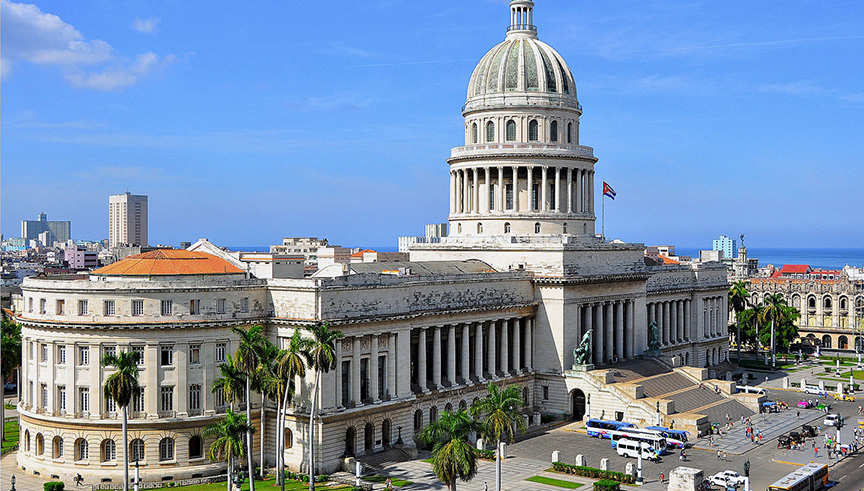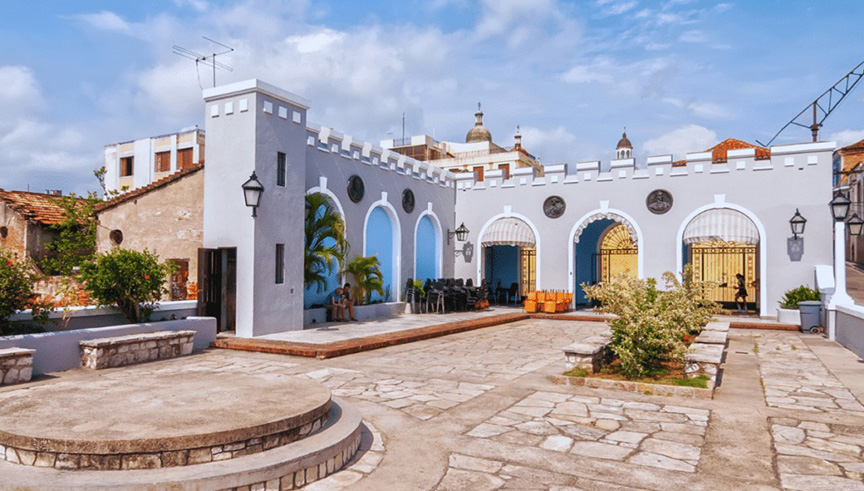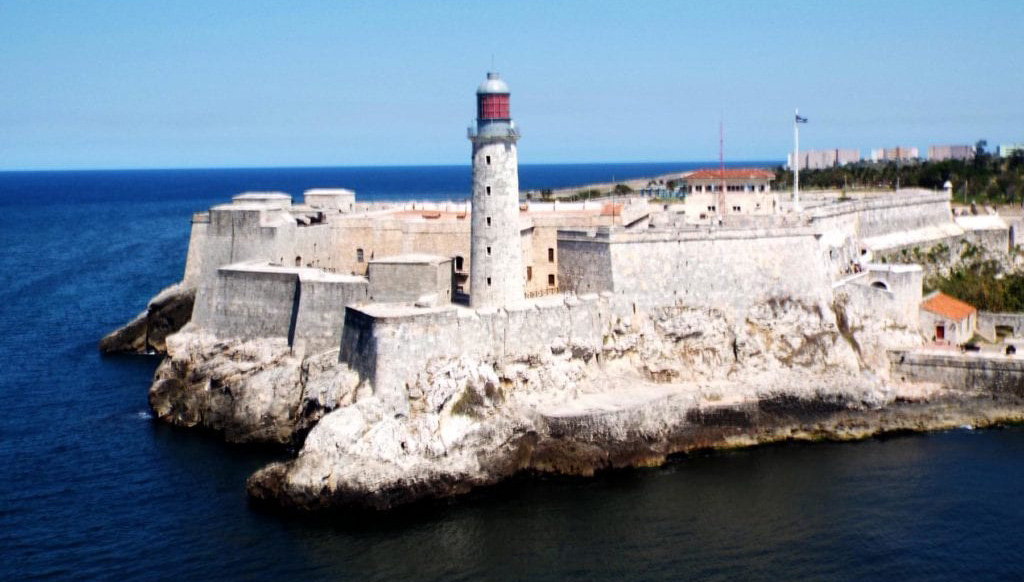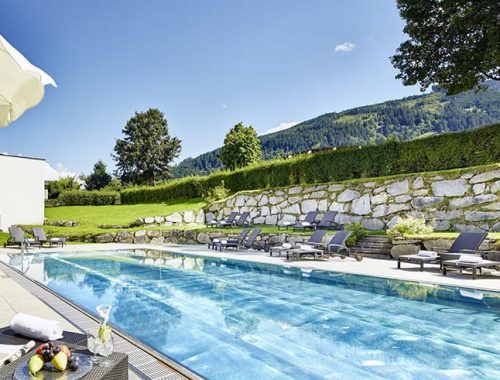
Santiago de Cuba: 10 Must-Do’s in the Heart of the Cuban Revolution
Santiago de Cuba, the second-largest city in Cuba, is situated in the rugged eastern part of the island. The city breathes Revolution and remains an ideal place to learn salsa and son (a fast-paced and rhythmic Afro-Cuban dance). However, many visitors skip Santiago and its half a million inhabitants during a vacation in Cuba. Many tourists don’t venture beyond Trinidad in Central Cuba, ignoring El Oriente, the eastern region where Santiago is located.
1. Experience the Raw Cuba in Santiago
Cuba is more than rum, cigars, and salsa. The Cuban Revolution of 1959 gave the country international recognition, and to this day, the Caribbean island remains a socialist state. After six decades of Castro dynasty, President Diaz-Canel has been in power since 2018, but what has truly changed? What remains of the idealism, scarcity, and heroic takeover more than half a century ago? To see the real face of Cuba, you must go to Santiago. This little-visited city still breathes the revolutionary atmosphere: authentic, communist, but also plagued by poverty and heat. Here you see people collecting food rations at state stores with their ration books and experience how rum is the lubricant of society: the perfect way to forget all your problems. Are you looking for the real Cuba? Then definitely travel to the rugged Oriente.
2. Escape Mass Tourism
Since Cuba opened its borders to tourists in the 1990s to escape a deep economic crisis, tourism has grown rapidly. When the government allowed casas particulares (Bed & Breakfasts) and paladars (home restaurants) in 2008, visitor numbers really took off. Havana has since turned into a construction site with plans for a five-star hotel with a helipad, and although it is still a fantastic city, it has lost some of its authentic Cuban charm. Santiago de Cuba remains pure and raw. Prices are low, and attractions are quiet. Only during the carnival in July is it busier. Due to the relatively small number of tourists, there are fewer accommodations and restaurants, and you need to be flexible: the city is sometimes plagued by power outages; eggs can be out of stock, and sometimes it’s hard to get gasoline.
3. Learn to Dance Like a Local in Santiago’s Sexy Dance Schools
Santiago’s dance schools are famous throughout Cuba and beyond. In rugged Santiago, you can master the basic steps or train your rhythm and elegance over several weeks. You can book dance vacations with a regular salsa teacher or simply walk into Casa de la Musica or Casa de la Trova after 10 p.m. Cuban nightlife starts late, so don’t be surprised if the hall is still empty after dinner. Keep in mind that Santiago de Cuba is a poor city, and opportunity makes the thief. So don’t leave belongings on the table while you go dancing and take a reliable taxi back to your accommodation at night (for example, a taxi arranged by your hotel, the dance school, or the casa where you are staying).
4. Visit Fidel Castro’s Grave
Fidel Castro is buried in the Santa Ifigenia Cemetery in Santiago de Cuba, alongside Cuban independence fighter Jose Marti and saxophonist Compay Segundo. The cemetery dates back to 1868, and many historical figures are buried here in decorated tombs, mausoleums, and grand graves, including the revolutionary Antonio Maceo and Cespedes. Entrance to the cemetery costs 3 CUC (approximately €2.50), and there is an extra charge for cameras. Every half hour, a ceremony takes place for the changing of the guard at Jose Marti’s mausoleum and Fidel Castro’s grave. Fidel Castro is buried in Santiago de Cuba because the failed assault on the Moncada barracks in 1953 is seen as the first step towards Revolution. This made Santiago de Cuba the heart of the Cuban Revolution, to which Fidel dedicated his life.

5. Taste the Best Santiago de Cuba Rum
Santiago de Cuba was the home of Bacardi until the state seized foreign companies in 1961. The rum factory then moved its headquarters to Puerto Rico. Today, the city produces the eponymous brand Santiago de Cuba rum. The rum is slightly more expensive than its competitor Havana Club Rum and is available in various versions: young, 3, 5, 7, 8, or 20 years old. The real deal, however, is Matusalem rum, which is officially not allowed to be exported and therefore cannot be found outside Santiago de Cuba. This 15-year-old rum has a somewhat sweet taste and is popular among enthusiasts.
6. View the Former Moncada Barracks and Learn More About the Cuban Revolution
The Moncada Barracks is now an ordinary school building. Only the bullet holes in the facade remind passersby of what took place here in 1953. The assault was later seen as the starting point for a guerrilla war against the ruling powers and the subsequent Revolution, but at the time, it was mainly seen as a coup attempt to overthrow the then-leader Batista. This place is essential to visit while in Santiago de Cuba to understand the story of the Cuban Revolution. During the assault, Fidel was captured and imprisoned, where he spoke his famous words during the trial: “History will absolve me.” He was released after two years when Batista granted amnesty as an attempt at reconciliation. In hindsight, this marked the beginning of the end for Batista’s regime. Santiago is still lovingly called “where the Revolution is alive,” “the heroic city.”
7. Go on a Pilgrimage to Cuba’s Most Important Cathedral El Cobre
About half an hour from downtown Santiago de Cuba is El Cobre, a mining village with approximately 7,000 inhabitants known for its large basilica, Santuario Nacional de la Caridad del Cobre, dedicated to the Virgin Mary. The basilica was visited by Pope Francis in 2015. It is also a well-known pilgrimage site for followers of the Afro-Cuban Santeria religion and a famous pilgrim destination. The basilica is built on a hill and overlooks the wooded hills of Santiago. When visiting El Cobre, it’s advisable to cover your shoulders and knees. Candles and prayer beads can be purchased at the entrance to the church. Entry to the church is free.
8. Dine in the Coziest Living Rooms of Santiago de Cuba
In Santiago de Cuba, in addition to state-run restaurants, you will find many paladares (restaurants in living rooms). For a long time, entrepreneurship was forbidden due to Cuba’s socialist rules. When the regime relaxed the laws, ambitious residents started restaurants in their living rooms for tourists and Cubans from other cities visiting Santiago. Today, you can enjoy delicious meals in the city’s hidden eateries. It’s a bit of a search (advertising signs are still forbidden), but word-of-mouth works wonders. Enjoy a lamb stew in wine sauce, spicy stir-fried shrimp, or butter-fried swordfish.
9. Drink a Mojito on the Roof of Casa Grande Hotel
Mojito, rum, Cuba… it’s an undeniable trinity. Walk through the streets of Santiago’s center and take the elevator up in Hotel Casa Grande to enjoy a strong cocktail. The view over the city is breathtaking. From here, you can see not only the harbor but also the Caribbean Sea and the promenades in the city center. Access to the rooftop bar costs 3 CUC (€2.50) and entitles you to a free drink. After that, you pay per drink.

10. Visit the Morro Castle
Morro Castle, or Castillo de San Pedro de la Roca, is located 6 km outside Santiago de Cuba and dates back to 1700. The fort was designed by architect Giovanni Battista Antonelli as a defense line against aggressive pirates. Today, you can visit this impressive structure on the shores of the Caribbean Sea for 5 CUC between 10:00 AM and 5:00 PM. Inside the fort, there is a museum where the history of piracy is explained through artifacts, maps, and texts. However, the real attraction is the structure itself, from which you have a beautiful view of the quiet beaches along the Caribbean Sea, the fertile hills covered with banana trees, and the city.
Santiago de Cuba offers a unique glimpse into the heart of the Cuban Revolution, where history and culture intertwine to create an unforgettable experience. From exploring historic sites like the Moncada Barracks and Morro Castle to enjoying local rum and dancing the night away in vibrant dance schools, this city captures the essence of Cuba’s rich heritage. Whether you’re sipping a mojito on the rooftop of Casa Grande Hotel or embarking on a pilgrimage to the El Cobre Basilica, Santiago de Cuba promises an authentic and enriching journey. Embrace the raw beauty, the revolutionary spirit, and the warm hospitality of Santiago de Cuba for a travel experience unlike any other.

4 Bike Trip Ideas in France
You May Also Like

Recommended Alpine Resorts in Austria: Enjoy a Peaceful Retreat in the Alps
18/04/2025
Munich Airport Ultimate Guide: Terminals, Entry Procedures & Best City Transportation Options
07/03/2025
